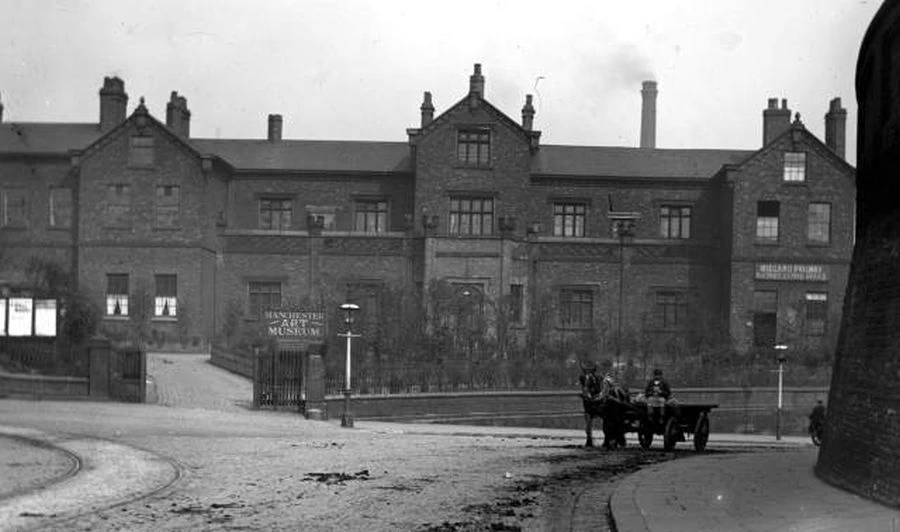The Manchester Art Museum, also known as the Horsfall Museum or Ancoats Museum, existed in Manchester from 1877 until 1953. It was begun as an educational venture by the philanthropist Thomas Coglan Horsfall, who had been inspired by the writer and art historian John Ruskin to provide education and inspiration to the working classes.[1]
The museum was initially housed in rooms at a new gallery in Queen’s Park, in north Manchester, but in 1886 it was moved to Ancoats HallPost-medieval country house built in 1609 in Ancoats, Manchester by Oswald Mosley, a member of the family who were Lords of the Manor of Manchester. , where it stood as “a cultural beacon on the edge of the dirtiest, dreariest neighbourhood”. Its collection included a wide range of items including paintings, engravings, photographs, reproductions, antiquities, ceramics, glass, metalwork, natural history specimens, and images of Manchester.[1]
In keeping with Horsfall’s moral views, no nudes were displayed in the gallery. According to the historian Shelagh Wilson, the museum was popular as a respectable alternative attraction to pubs and music halls, but by the early 20th century it was unable to compete with new forms of popular entertainment. When a cinema opened nearby, attendances dropped dramatically.[2]
The museum was taken over by Manchester City Council in 1918,[3] and it eventually closed in 1953, when most of the collection was transferred to the Manchester Art Gallery.[1]

